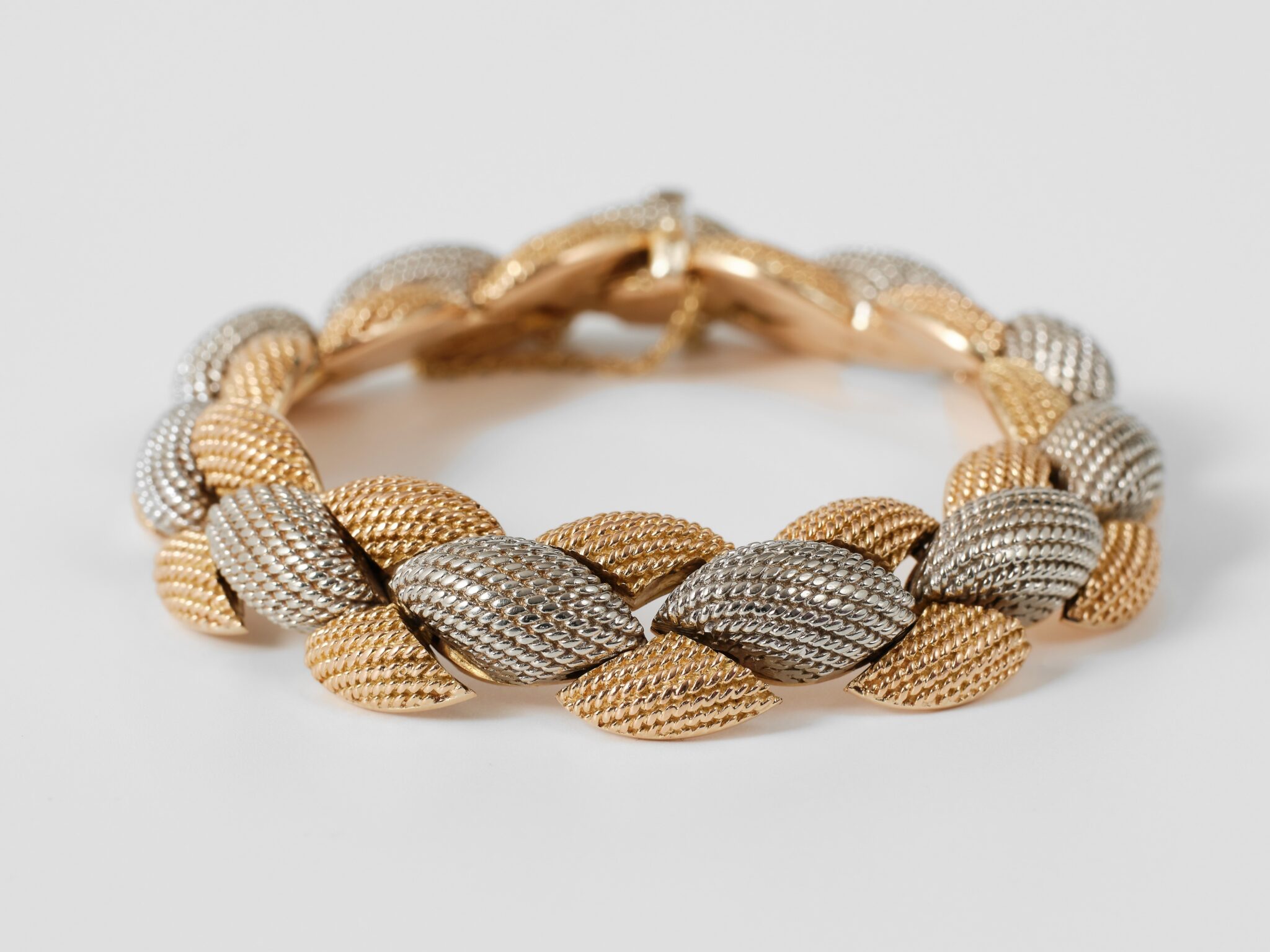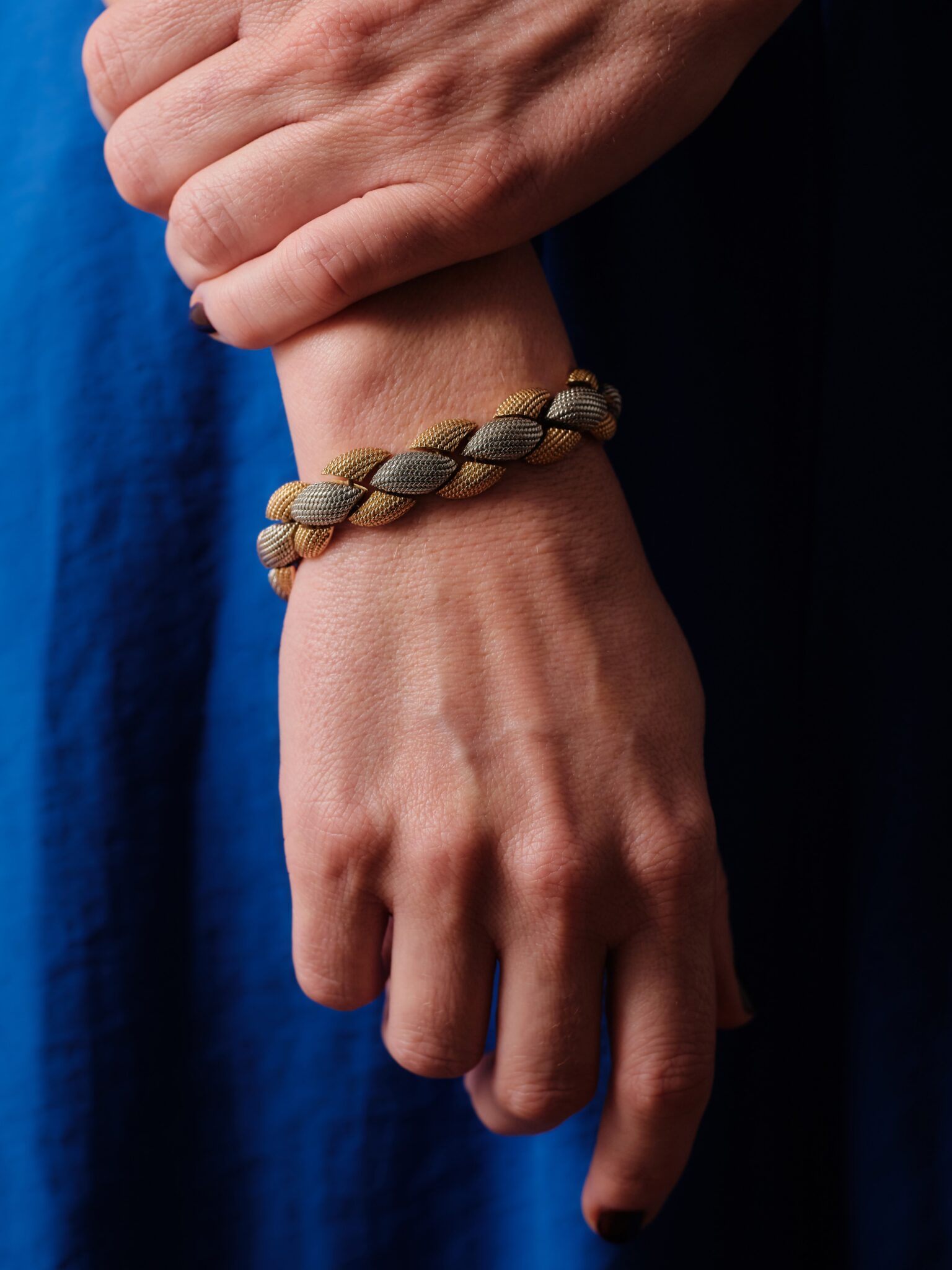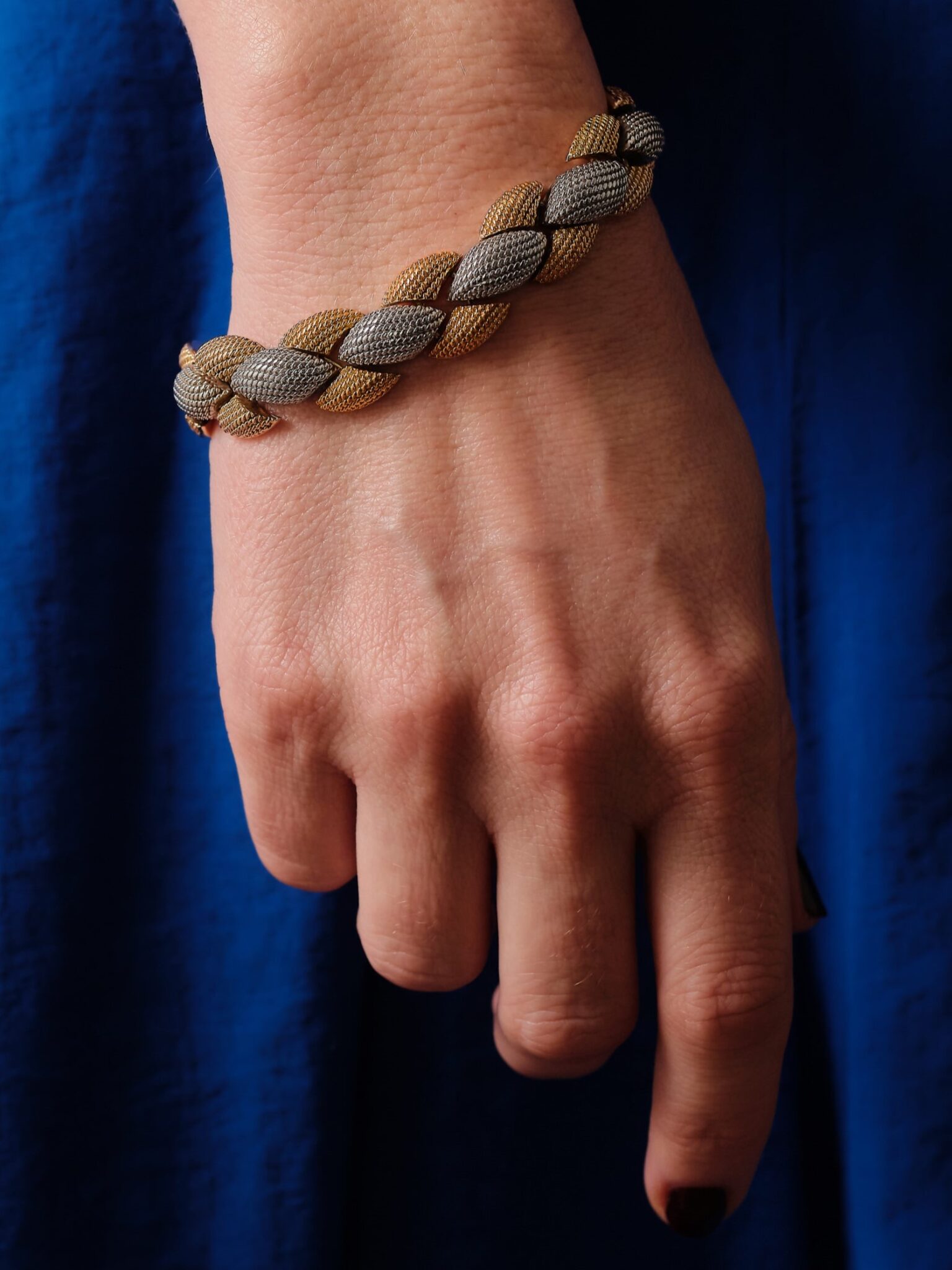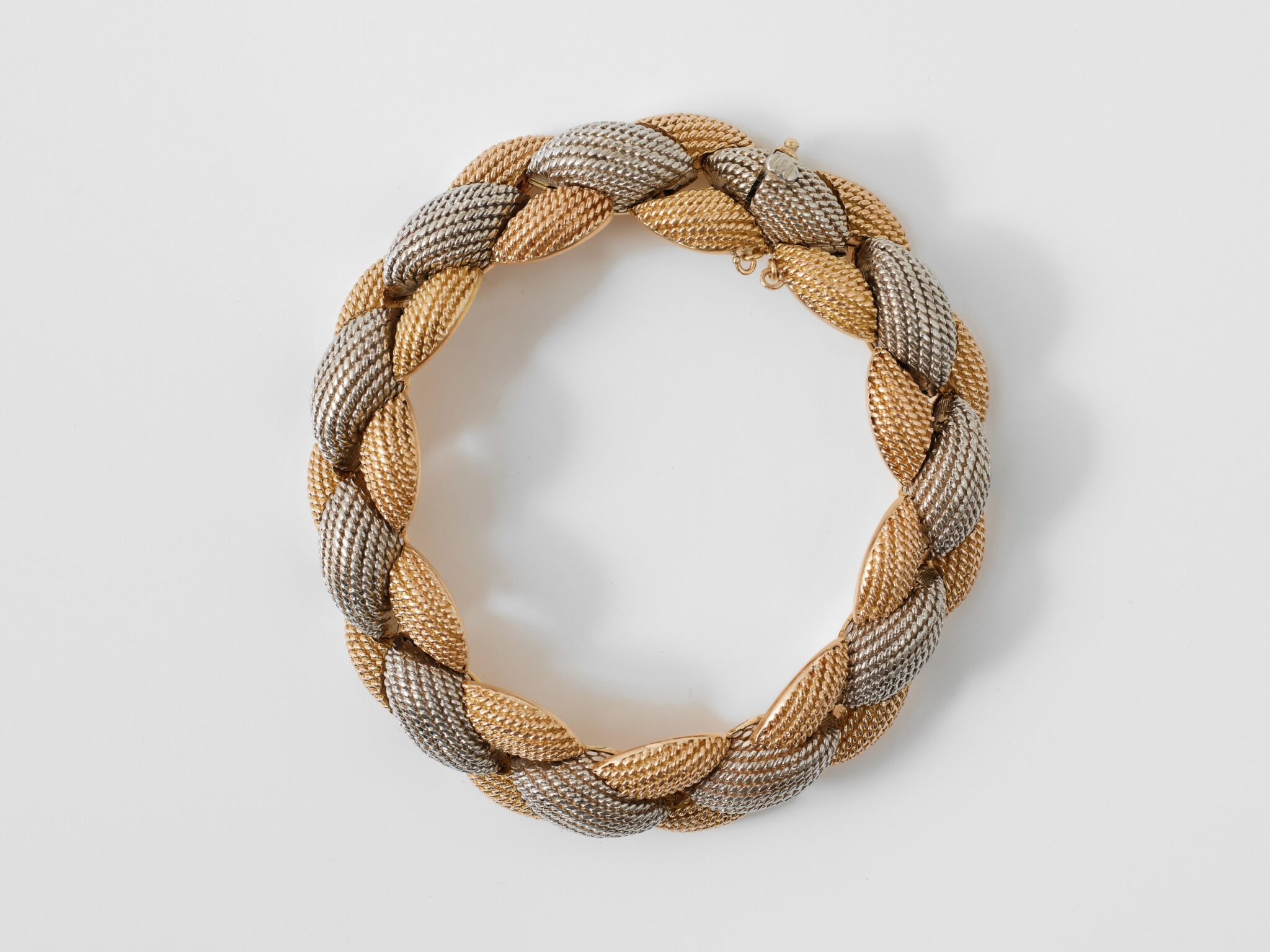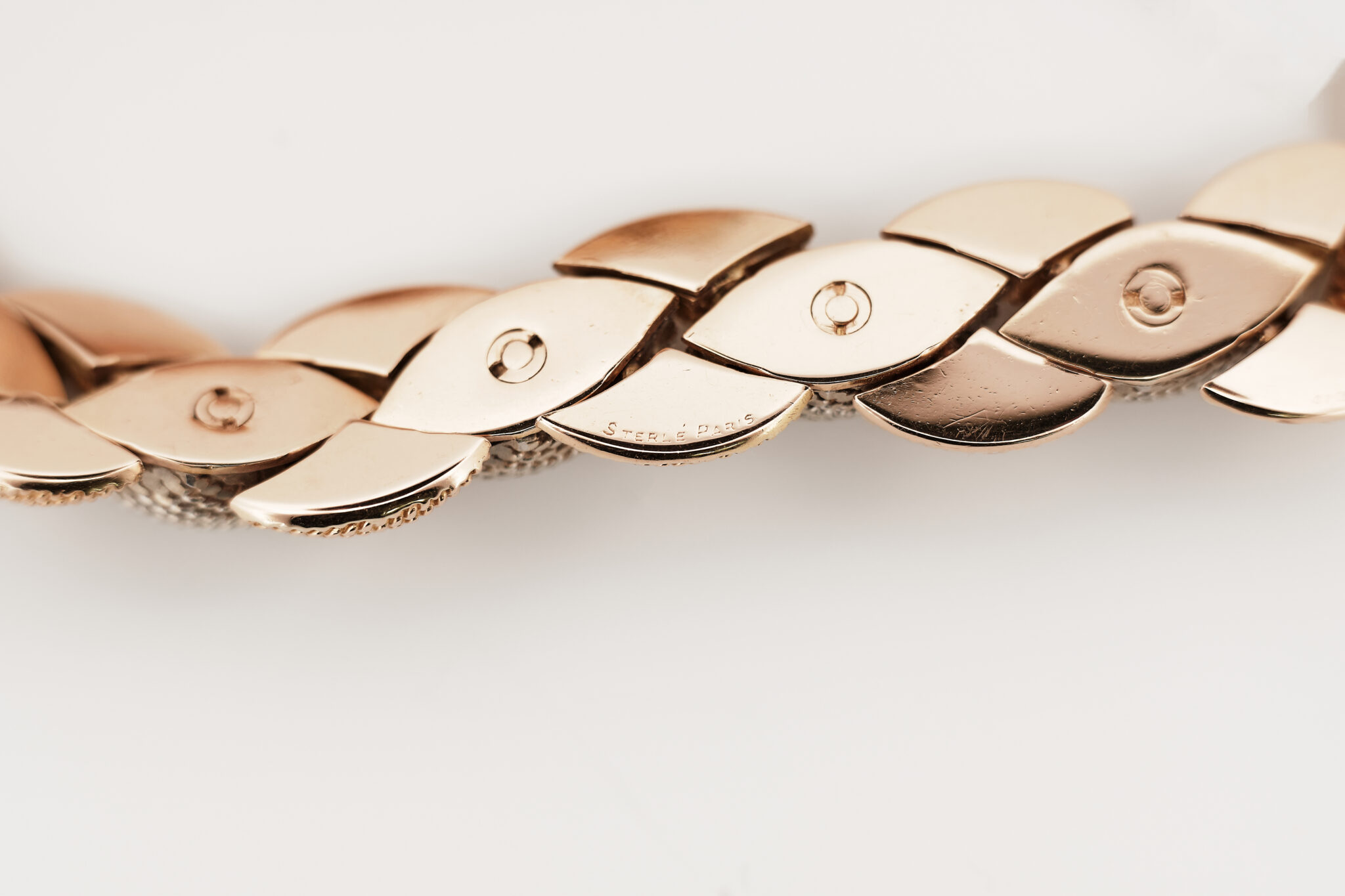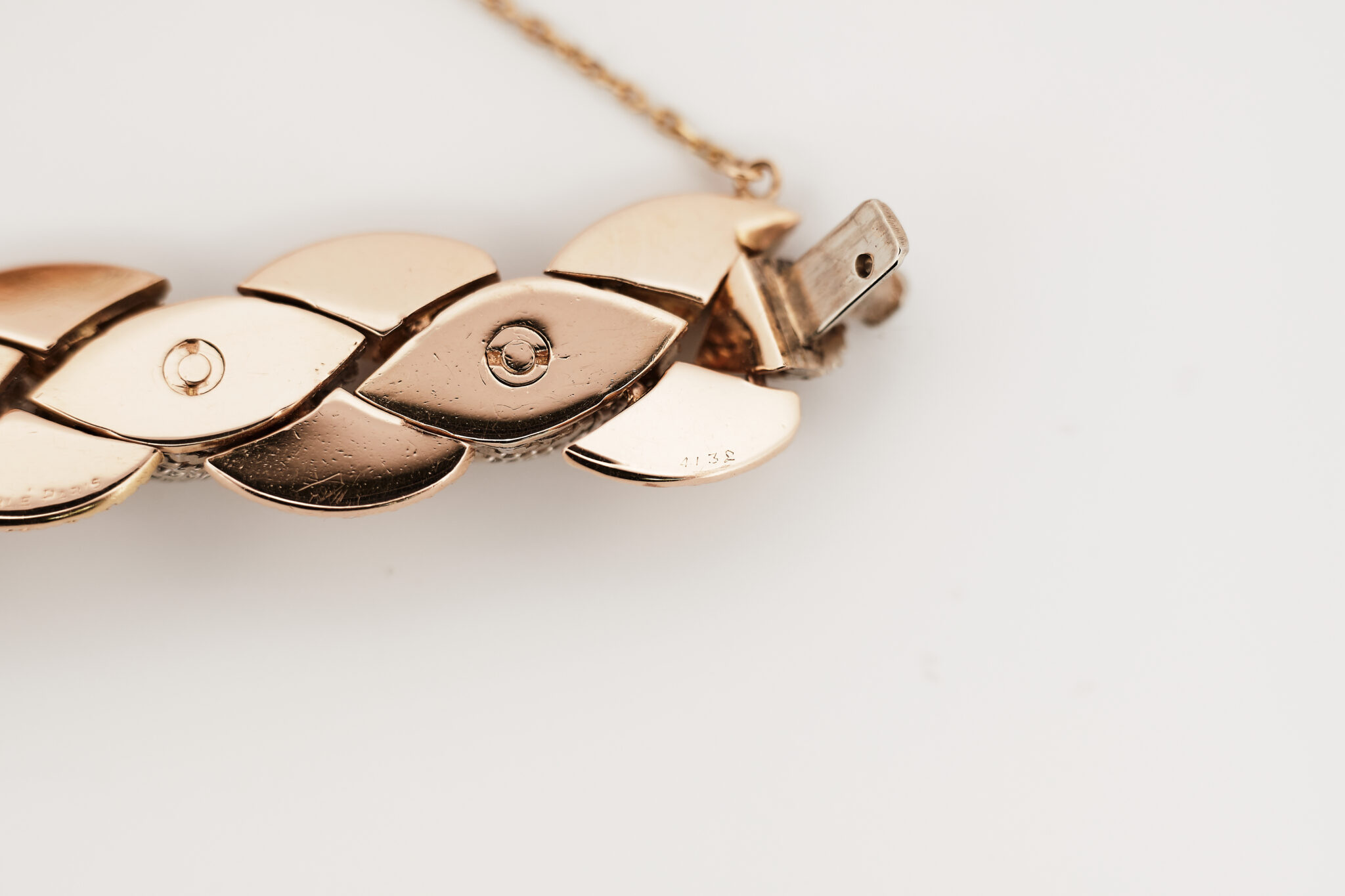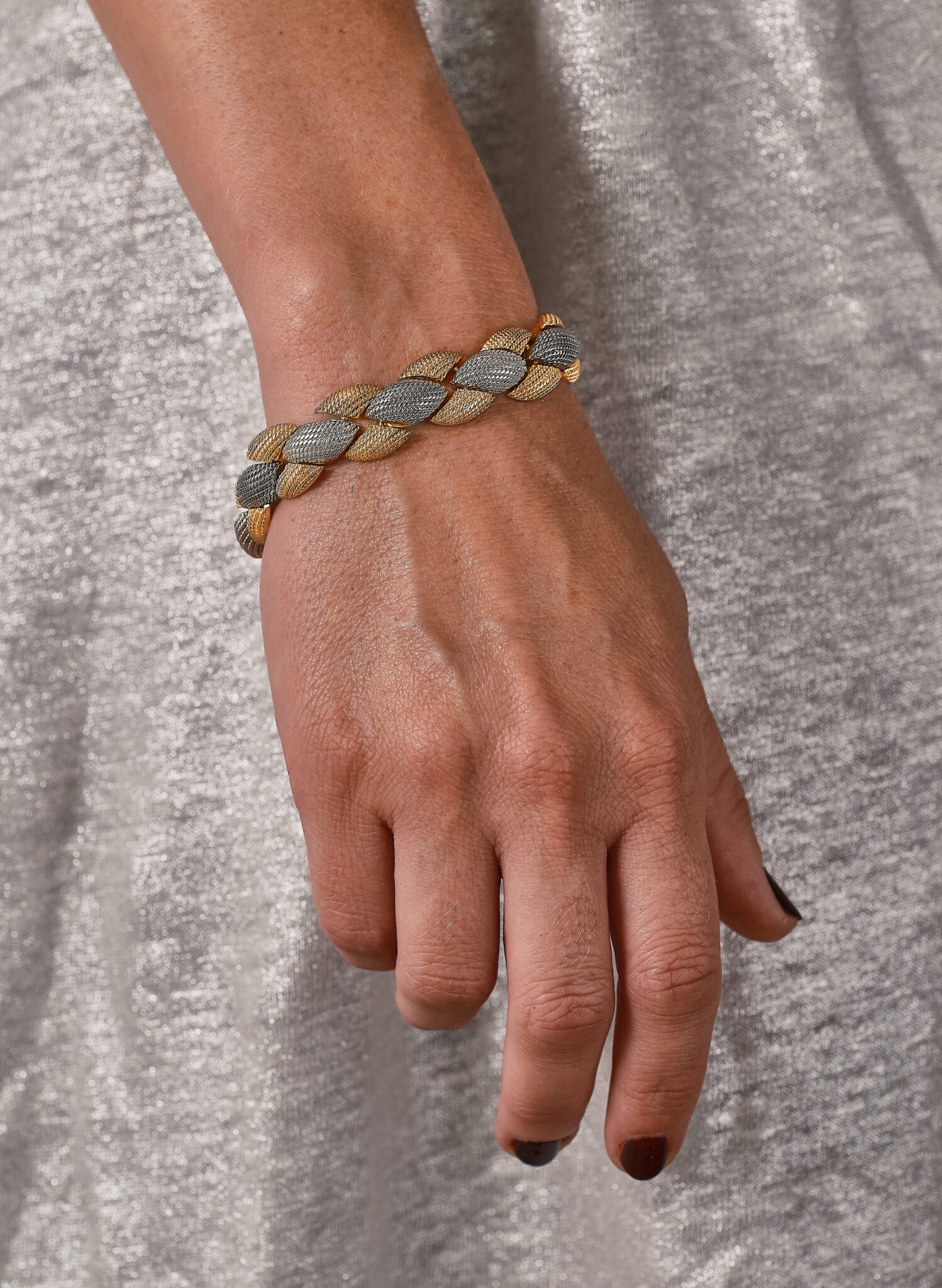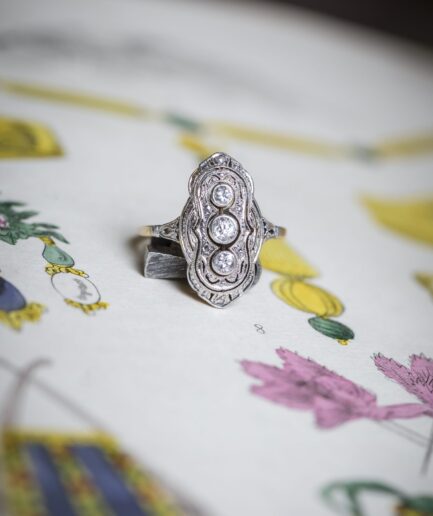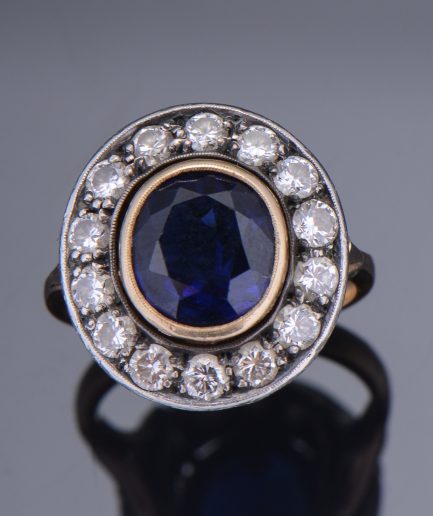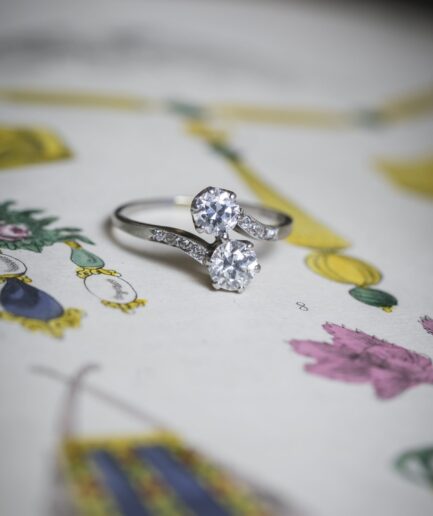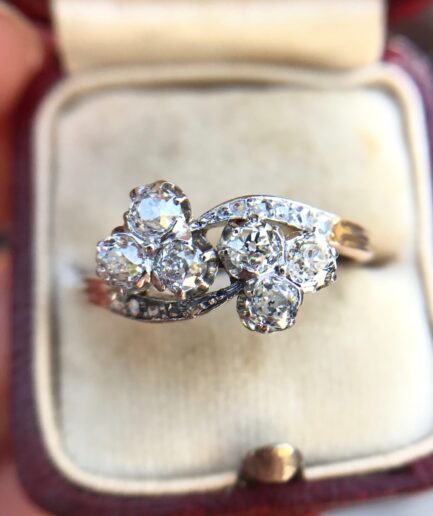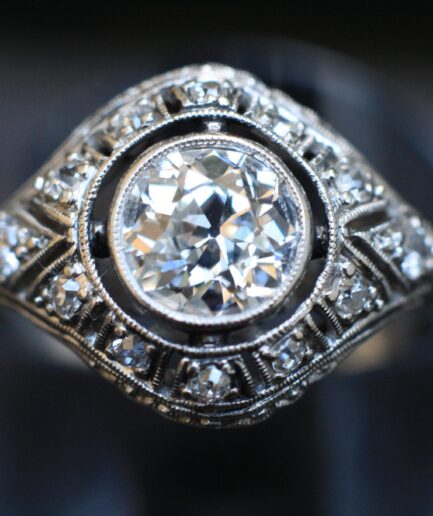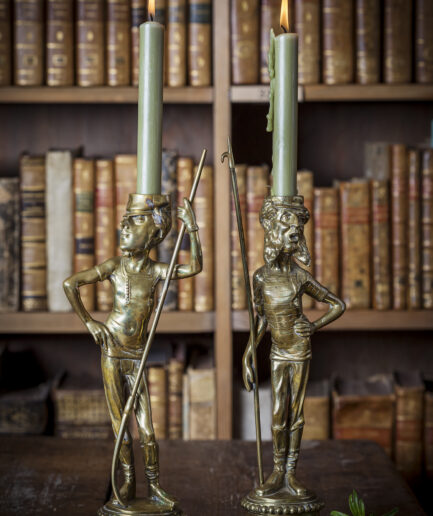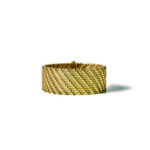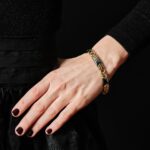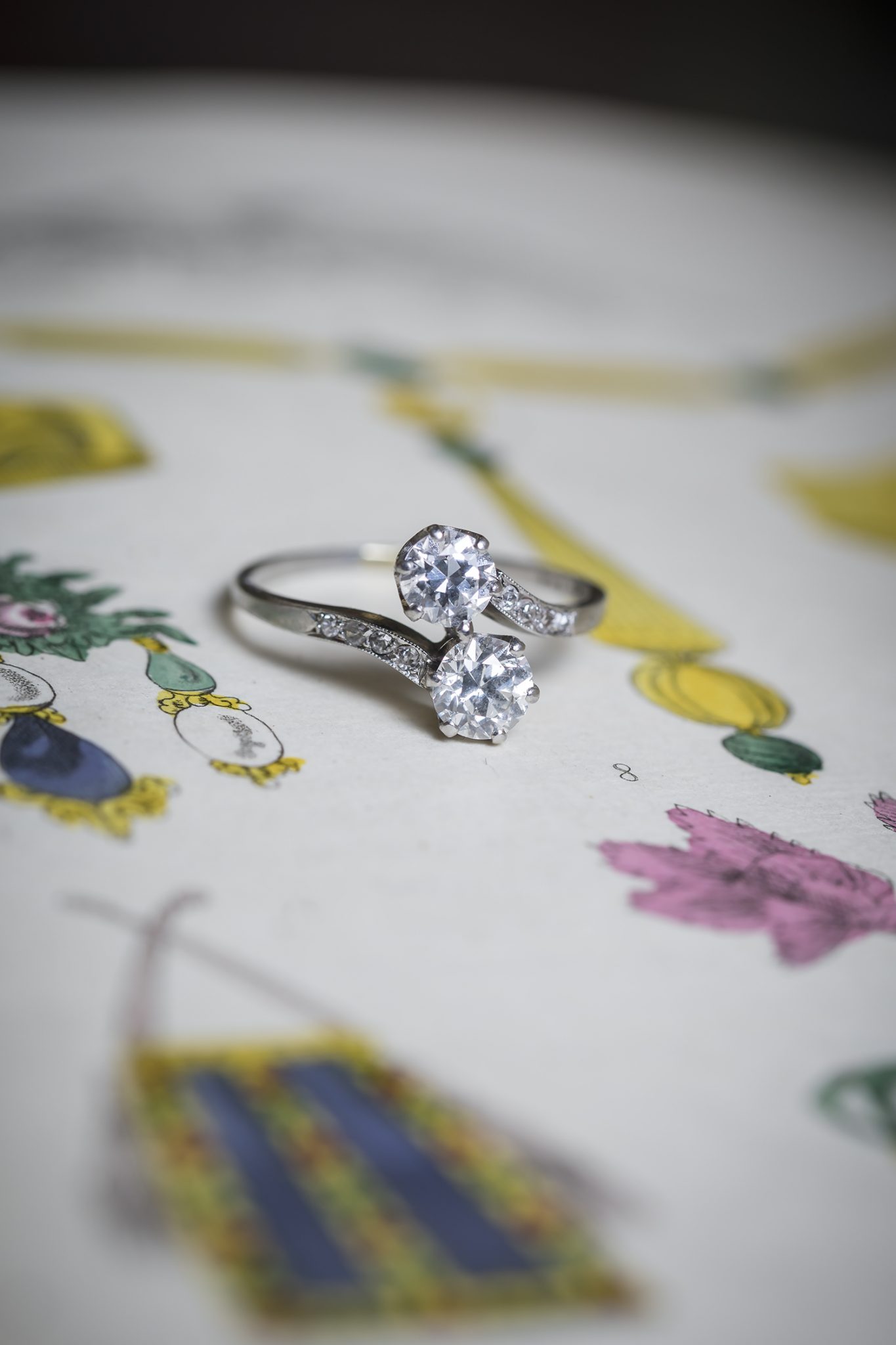Sterlé bracelet.
Made in France circa 1960. Signed and numbered – Sterlé PARIS 4132. 18cm long plus one extra link 2cm, 1.5cm wide. Total weight: 76,7 grams
Pierre Sterlé,
1905 – 1978
Not a household name.
Pierre Sterlé not heard of him? Don´t feel bad. Pierre Sterlé, while not known to a wider public, is considered a highly important jewelry designer. His poetic, highly crafted pieces are some of the most distinctive designs of the 20th Century, and some of the most collectible. A widely respected name and an important figure in the luxury jewelry market. His pieces were produced for, and seen by, a select few.
Born in 1905 in Nice, France into a family of high-ranking financiers and Civil Servants, he was merely 10 years old when his father was reported missing, presumed killed, in the First World War. This great personal tragedy resulted in him being placed into the care of an uncle, Maynier-Pincon, who was a jeweler on the rue de Castiglione in Paris. He would, in time, become Sterlé’s tutor and mentor, training him in all aspects of the jewelry trade. In 1934 at the age of 29 Sterlé opened his own workshop on rue Sainte Anne and for the next five years he created jewelry for some of the most prominent Parisian houses such as Boucheron, Chaumet and Ostertag whilst simultaneously developing his own style. As his skill and reputation grew, he began to accept more individual commissions and by 1939 he was producing jewels exclusively for private clients.
As both his business and clientele grew, he took the decision to move to a more suitable and luxurious premises, opening an atelier workshop on the third floor of 43, Avenue de l’Opera in 1945. Sterlé, Like the jewelers at Boivin before him, and JAR after him, felt this was close enough to the Place Vendôme to be convenient for his increasingly wealthy and fashionable clients but still far enough away for him to be able to maintain his sense of elitism. He had no interest in running a ground floor boutique which was open to the public and with windows in which to display his jewels to anyone who happened to be walking past. It was, for socialites and royalty alike, by appointment only.
A man of great personal charm and grace he saw himself as separate from the large jewelry houses and sought to create an aura of exclusivity and prestige for his work.
Customers and collectors came from all over the world, and he undertook some historically important commissions including being asked to remodel the crown jewels of Egypt by Queen Narriman.
Whilst he never actually drew the designs himself, Sterlé employed highly talented designers to translate his creative imaginings into technical designs for the craftsmen to execute. He strongly opposed the jewel as a mere financial asset. He was inspired by nature and the shapes and forms found therein but refused to be constrained by the formal rigidity of metal and gemstones which he sought to manipulate and infuse with movement and life. Achieving remarkable fluidity and intriguing asymmetry, bringing them a sense of movement and the difficult-to-achieve combination of glamour and ease.
He created innovative jewels using the rich tones of yellow gold paired with gemstones which he valued for their color and artistic impact. He playfully combined the vibrant tones of coral, lapis, turquoise, sapphire and peridot amongst others. However, he also had a strong inclination towards the purity of white metal and diamonds, often contrasting the lively sparkle of brilliant cut diamonds with the clean geometry of baguette cuts in the same piece. His diamond jewels won him the prestigious De Beers Diamond Corporation’s ‘Diamond Award’ not once but in three consecutive years in 1953, 1954, and 1955.
He was renowned amongst his peers for his technical expertise, often treating gold as if it were fabric, twisting, knotting and plaiting it to create texture and movement in his jewelry like no other jeweler. In 1957 he invented a new way of working with gold called ‘fil d’ange’ or ‘angel wire’ knitting it into fine ropes which he used to create fringes. These became a distinctive element of his jewels.
Sterlé achieved great success both at home and abroad during the 1940’s and 50’s with clients including some of the most significant jewelry collectors of the period such as King Farouk of Egypt, the Maharani of Baroda and the Begum Aga Khan. Some of Sterlé’s most famous designs include the “Zip” necklace, which he created for the Duchess of Windsor in the 1950s, and the “Ballet” necklace, which was inspired by the movements of ballet dancers. Despite this however, a series of professional and personal misfortunes and miscalculations including a failed attempt to branch out into perfume saw Sterlé’s fortunes fall dramatically and in 1961 he had to sell many of his designs to Chaumet as well as some to New York jeweler Montreaux. He recovered, and as the first modern jeweler to be invited to do so, staged a very successful display at the 1966 Paris Biennale. This contributed directly to a decision, against all his previous reasoning, to open a store front in 1969 on the rue Saint-Honoré. Unfortunately, his earlier misgivings were proved right, and the shop was ultimately unsuccessful, forcing him to declare bankruptcy and liquidate his stock in 1976. Most of it was bought by Chaumet, who commenced signing anything that was not already so, resulting in pieces as early as 1962 now having a Chaumet signature. Sterlé stayed on as a technical consultant with Chaumet until his death in 1978.

